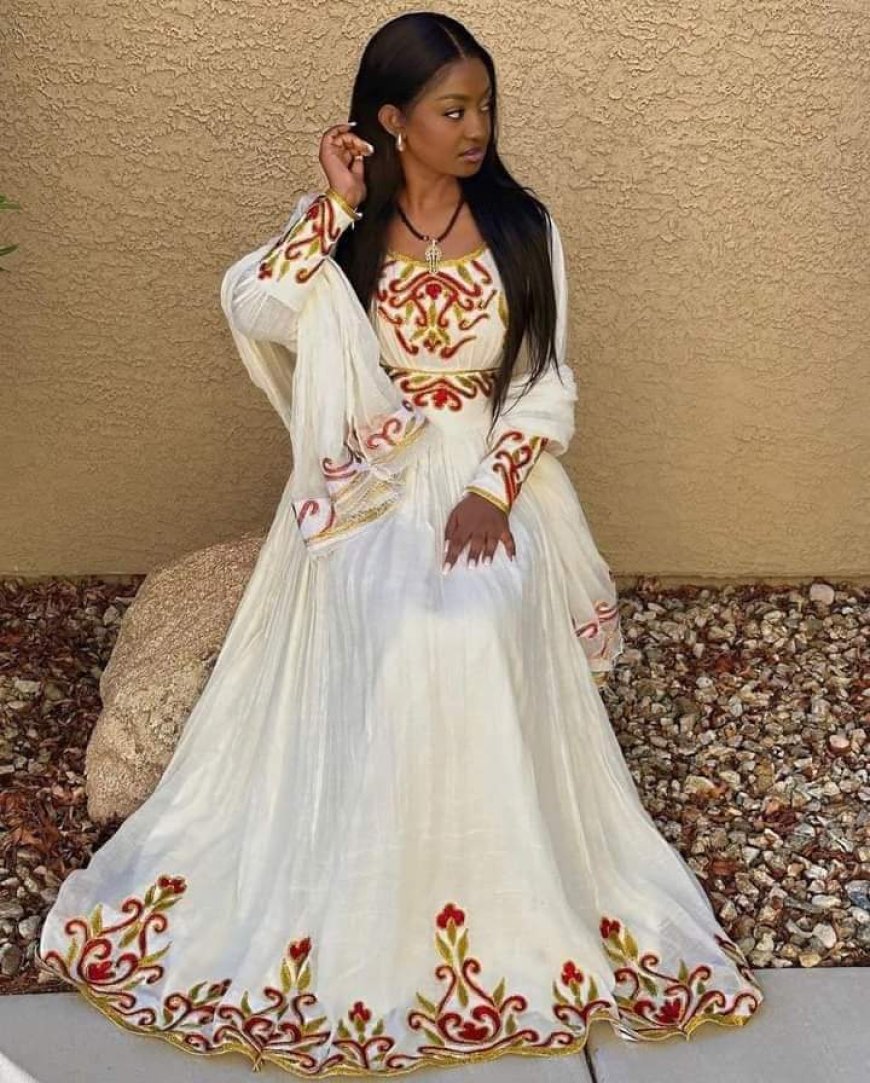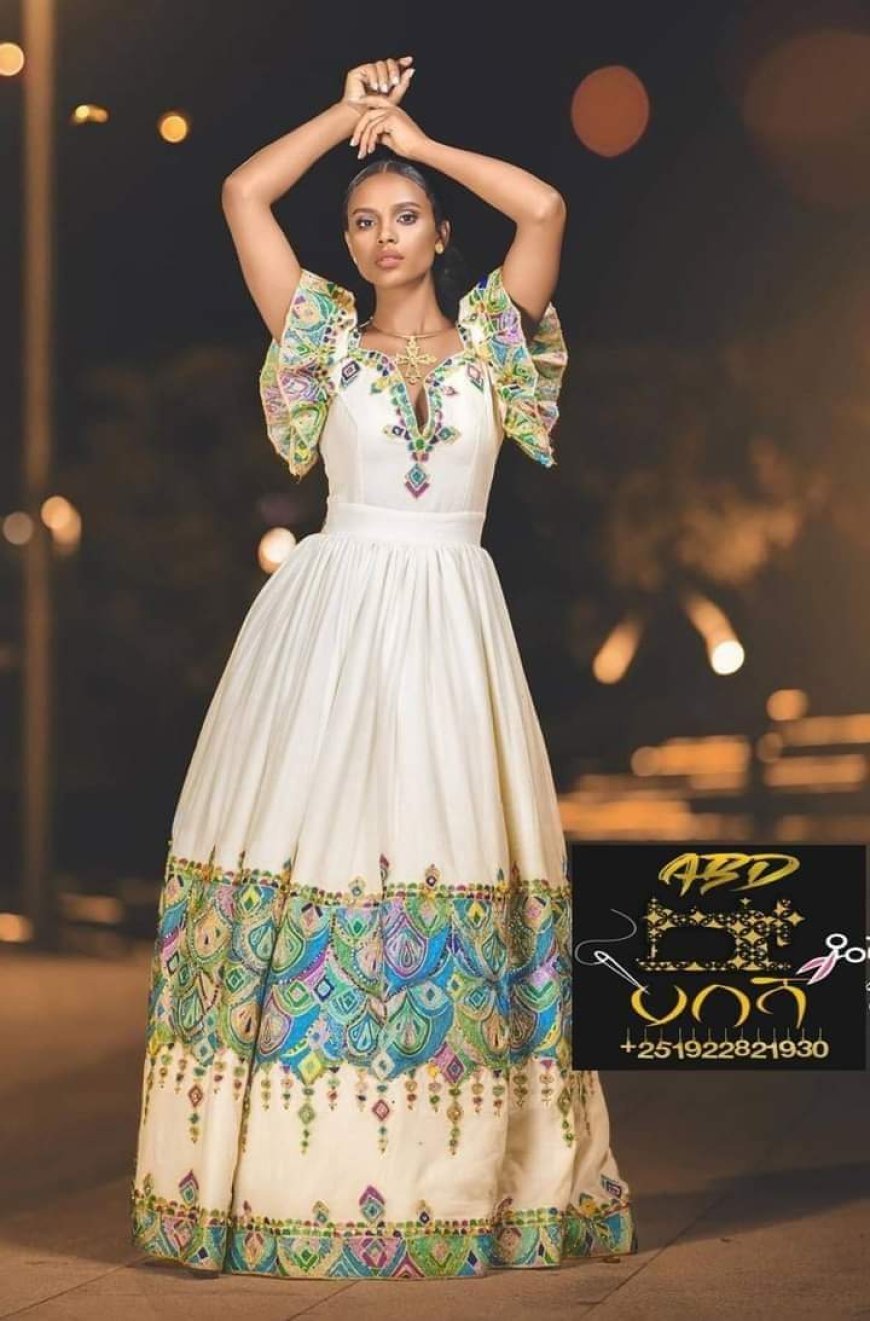Ethiopian traditional clothing

Ethiopian traditional clothing
Ethiopian traditional clothing varies across different ethnic groups, regions, and occasions. Here are some common styles:
1. For men:
- The shamma or gebere is a large, white cotton wrap worn as a shawl or a toga-like garment. It is often draped over the shoulders and belted at the waist.
- The kuta is a long, ankle-length shirt with a buttoned or open neck and loose sleeves. It is often made from colorful fabric and paired with pants or a skirt.
- The gabi is a thick blanket-like cloak, usually made from white or natural-colored wool. It is worn over the shoulders and tied at the waist.

2. For women:
- The habesha kemis is a traditional ankle-length dress usually made from cotton or chiffon fabric. It is characterized by its intricate embroidery, colorful patterns, and tight-fitting bodice with wide sleeves. It is often worn with a shawl called a "netela" and a headwrap.

The Habesha Kemis is a traditional ankle-length dress worn by Ethiopian women. It is a quintessential component of Ethiopian traditional clothing, particularly within the Amhara and Tigray ethnic groups. The Habesha Kemis is known for its vibrant colors, intricate embroidery, and tight-fitting bodice with wide sleeves.

The dress is typically made from cotton or chiffon fabric and often adorned with patterns inspired by Ethiopian culture and nature. It may feature geometric designs, floral motifs, or religious symbols. The embroidery is often handcrafted and can be found along the neckline, sleeves, and hem of the dress.

The Habesha Kemis is usually worn with a shawl called a "netela," which is draped over the shoulders and can serve both functional and decorative purposes. Additionally, women often accessorize with traditional jewelry such as necklaces, bracelets, and earrings to complement their Habesha Kemis.

This traditional garment is commonly worn during cultural events, weddings, religious ceremonies, and other special occasions. It represents Ethiopian identity, heritage, and pride in the country's rich cultural diversity.

- The dirac is a flowing dress made from lightweight fabric, typically worn by Somali women in Ethiopia. It consists of a wide skirt, a long-sleeved top, and a matching headscarf.
- The wollo bisha is a wrap-around skirt made from woven cotton or silk cloth, often adorned with colorful stripes or patterns. It is typically paired with a fitted blouse or a shawl.

In Ethiopian culture, the "gabi" is a traditional garment that holds significant cultural and practical value. It is a large, thick blanket-like cloak usually made from white or natural-colored wool. The gabi plays an essential role in Ethiopian daily life, particularly in the colder highland regions.
The gabi is often worn draped over the shoulders and tied at the waist with a belt. It provides warmth and protection from the elements, especially during cooler weather or at higher altitudes. It is also used as a multifunctional item, serving as a blanket, a pillow, or even a makeshift bag to carry items.
The gabi holds symbolic and cultural importance in Ethiopian society. It is considered a symbol of hospitality and is often offered to guests as a sign of respect and welcome. It is also commonly worn during traditional ceremonies, religious festivals, and formal occasions.
The intricate patterns and designs found on the gabi can vary, depending on the region and the craftsmanship of the weaver. These patterns often reflect the cultural heritage and artistic traditions of specific ethnic groups within Ethiopia.
Overall, the gabi represents not only practicality and protection but also serves as a tangible representation of Ethiopian culture, history, and identity.







































